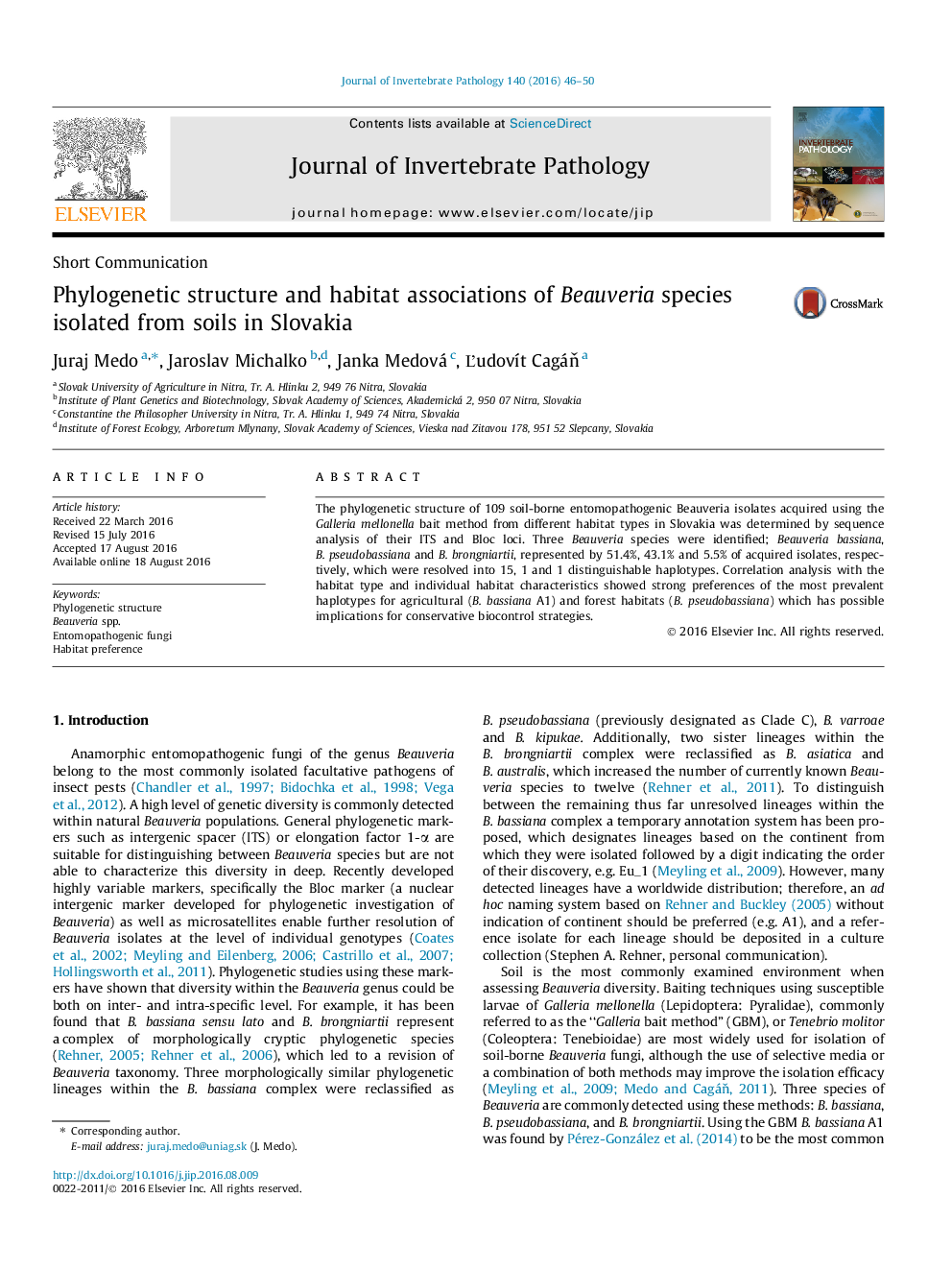| Article ID | Journal | Published Year | Pages | File Type |
|---|---|---|---|---|
| 4557488 | Journal of Invertebrate Pathology | 2016 | 5 Pages |
•17 distinguishable haplotypes of 3 Beauveria species were identified within 109 soil isolates.•B. Bassiana clade A1 and B. pseudobassiana were the most abundant haplotypes.•Strong preference of B. bassiana clade A1 towards agricultural habitats was found.•Strong preference of B. pseudobassiana towards forest habitat was found.
The phylogenetic structure of 109 soil-borne entomopathogenic Beauveria isolates acquired using the Galleria mellonella bait method from different habitat types in Slovakia was determined by sequence analysis of their ITS and Bloc loci. Three Beauveria species were identified; Beauveria bassiana, B. pseudobassiana and B. brongniartii, represented by 51.4%, 43.1% and 5.5% of acquired isolates, respectively, which were resolved into 15, 1 and 1 distinguishable haplotypes. Correlation analysis with the habitat type and individual habitat characteristics showed strong preferences of the most prevalent haplotypes for agricultural (B. bassiana A1) and forest habitats (B. pseudobassiana) which has possible implications for conservative biocontrol strategies.
Graphical abstractFigure optionsDownload full-size imageDownload as PowerPoint slide
